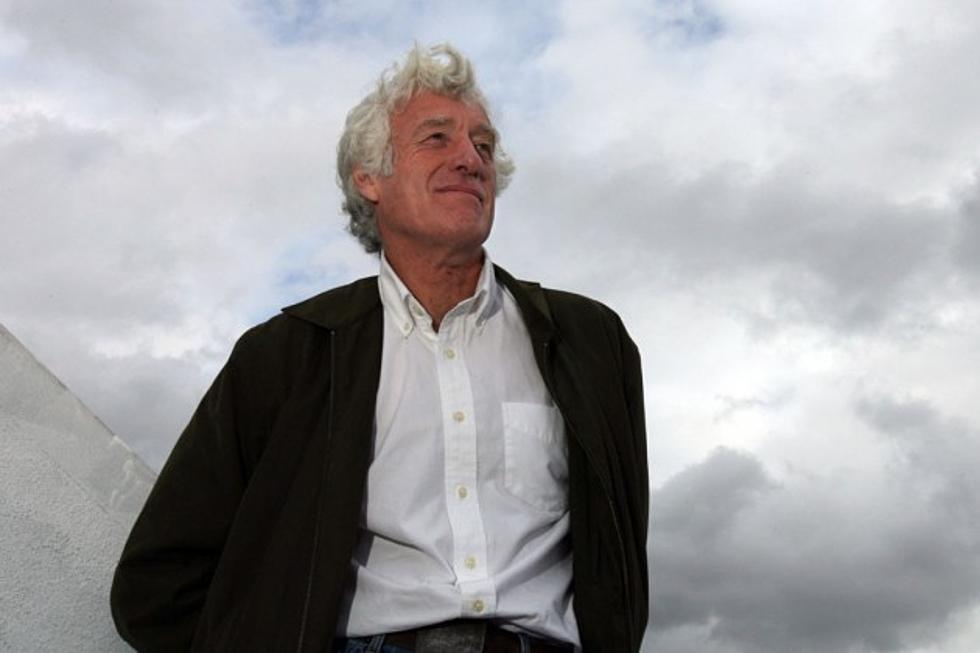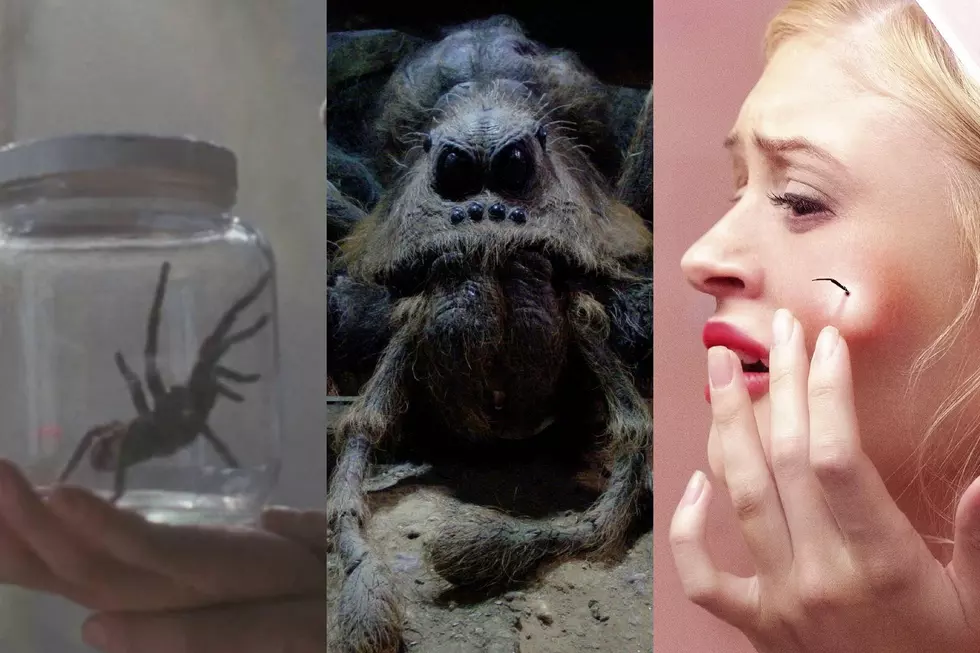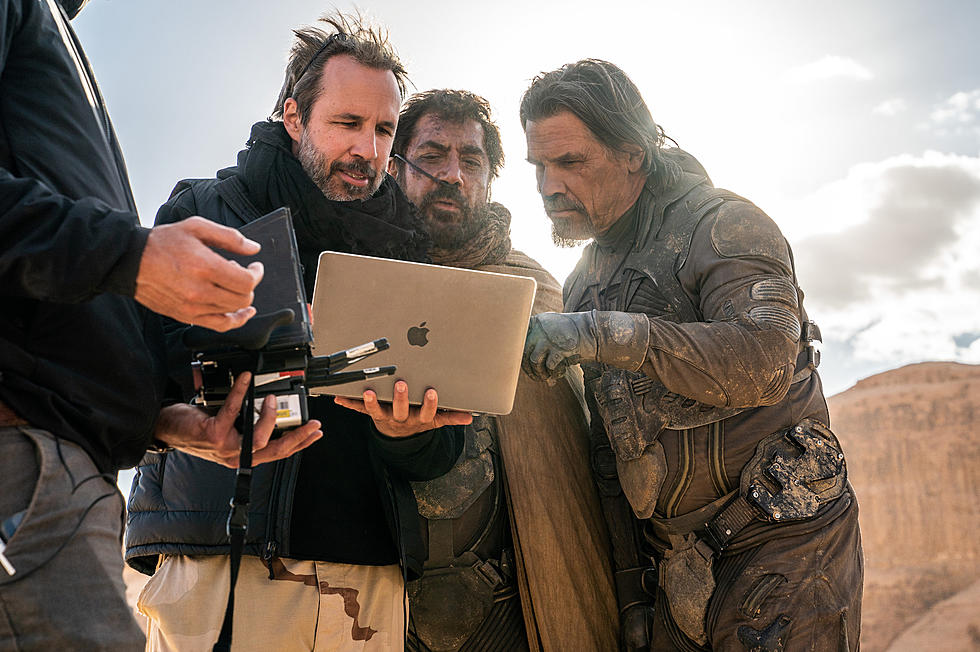
Roger Deakins on ‘Sicario,’ ‘Blade Runner’ and Why He Mostly Watches Old Movies
If you’ve watched a movie in the last 25 years and thought to yourself “God, this film looks great,” odds are it was shot by Roger Deakins. The master cinematographer of such modern classics as The Shawshank Redemption, No Country for Old Men, and Skyfall is considered the best director of photography working today by almost everyone on the planet (except the Academy, which has nominated him twelve different times but never given him an Oscar).
For a long time, Deakins was known as the Coen brothers’ primary visual collaborator. And while he still works with the Coens (he shot their next movie, Hail, Caesar!, which opens in theaters next winter), he’s also begun working regularly with director Denis Villeneuve. They first teamed for 2013’s bleak kidnapping drama Prisoners; next year, they’ll join forces to make the long awaited Blade Runner sequel starring Harrison Ford. In between they made Sicario, the new thriller about a hidden war raging along the U.S.-Mexico border between the CIA and drug cartels. Featuring great performances from stars Emily Blunt, Josh Brolin, and Benicio Del Toro and white-knuckle suspense, Sicario is one of the best and bleakest action movies of the year.
In typical Deakins fashion, it’s also absolutely stunning. A few hours before Sicario’s premiere at the Toronto International Film Festival, I sat down with Deakins to discuss his preparations for the film, why he mostly watches older movies, and what he’s planning for the sure-to-be-polarizing Blade Runner 2.
Sicario’s your second movie with Denis, and I’m pretty sure you’re already working on your third together.
I hope so.
What do you particularly like about working with him?
I like his way of working and his sensibility. That’s the most important thing; the way he sees the world. We just kind of compliment each other.
How would you describe the way he sees the world?
Same way I do, really. [laughs] He’s not interested in making a film that is over-melodramatic. He really is searching for something — it sounds pretentious — but with greater meaning. He’s a serious filmmaker. He really loves imagery and juxtaposition, so he’s always searching for something that’s not just for the sake of it.
How do you prepare for a movie like Sicario and how do those preparations differ from what you might do on a movie like Hail, Caesar!?
Well, the thing about the Coen brothers is they write the script and they storyboard the film before we start. Sometimes I’m involved in the storyboards with them and we did some of Hail, Caesar! together. But mainly they do it and then we go through it or we talk about it. With Denis, we start, we discuss the script in a general way, and then gradually we work on storyboards together. They’re not necessarily what we shoot, but it’s a way of each of us finding the film, finding the style of the film, finding the look of the film.
Do you ever look at other films as you’re preparing or do you want to shut out other films to make what you’re working on totally different?
Sometimes you look at things just to see the way other people have done action, or something like that. We didn’t for Sicario, but I’ve done that in prep before; look at specific types of scenes. But no, we didn’t really much on Sicario. Patrice [Vermette], the production designer, did a whole series of imagery for the film, for his color palette, and obviously reference images of Mexico and the drug wars and stuff. And I came with different imagery, as did Denis. And we would just sit and discuss these different ideas.
The tension in the movie is just incredible. Obviously that’s something that has a lot to do with how the movie is edited, but are there any tricks of the trade on the cinematography side to build suspense?
Well you say it has a lot to do with editing. But it’s also the shots. For instance, the shot of the team going down towards the tunnel. It’s the holding the shot until they finally disappear. And when they disappear against the sunset, still holding it that beat longer. I think normally people put in a lot of cuts in to build up tension. But I think for me it works the other way. The tension sometimes comes in holding a shot.
One of my great references of filmmakers — and I mentioned this to Denis, I think he watched some of his work — is Jean-Pierre Melville. What he did is really extraordinary, and it hasn’t been bettered in terms of building tension with very little; not doing fast cutting or anything visually that brings attention to itself.
It’s all about stillness.
Stillness, yeah, and low-key. Whether it’s Alain Delon just putting his hat on in Le Samourai, or the robbery of the van on the mountain path in Second Breath, it’s extraordinary the control Melville had over the medium.
Once they go into that tunnel, that sequence is so visually complex. There are night-vision shots, there are thermal vision shots. Is it all approximated with the camera? Is it added in post-production? How does that work?
We actually shot the thermal vision with a thermal vision camera. And then the night vision, that’s a enhancer that goes on the lens that gives you the green color.
Had you ever worked with those things before?
I hadn’t worked with thermal before; I’d worked with night vision quite a bit in the past.
The thermal was interesting. We decided we had to do that in terms of the perspective of the characters through their optical systems. You couldn’t shoot it at night with fake moonlight because it doesn’t make any sense because they can’t see — that’s why they’ve got these devices to help him. We shot a couple of shots with a very, very dark sky; there’s only one in the film when the first guy’s going in the tunnel and you see him take his knife out against a dark sky. We played that so it was an objective shot outside of anybody’s perspective. But otherwise, once they’ve gone down the hill, you’re staying in someone’s perspective.
I don’t know if you ever think of it this way, but do you have any shots that you’re particularly proud of, either from Sicario or others you’ve worked on?
The biggest challenge of any cinematographer is making the imagery fit together of a piece; that the whole film has a unity to it, and actually that a shot doesn’t stand out. In a way it’s a false compliment when somebody says “Oh I love the shot where such and such!” Actually you shouldn’t love that shot. You should love what’s happening, you should be in the story. Somehow that’s taken you out of it.
In that same scene where the guys are getting ready to go into the tunnel and it’s all at sunset and we had this wonderful sky — sure, it’s magical visually. But that’s not really what the scene’s trying to say. It’s a balance, creating something that is visually exciting but shouldn’t distract from the script. It’s tricky.
Is there one film, then, where you felt like you best achieved that balance?
It’s funny because a lot of the films, like Sicario or No Country For Old Men, are more naturalistic. But I suppose of all of them, I would say The Man Who Wasn’t There is most cohesive as a piece of visual interpretation or whatever you want to call it. It all sticks together, nothing in it stands out. Whereas other films, you look at a scene and think “Well that didn’t quite come off.” In The Man Who Wasn’t There, whether you like it or not, it fits together. It has a unity to it.
What was the last film that you watched that you didn’t shoot that really impressed you?
I usually notice in cinematography after a few times I’ve seen a movie. I’ve had some time off again lately and I was catching up with all the Melville films again.
Do you tend to watch older films?
If I’m quite honest, I tend to watch older films cause I think most recent films are pretty crappy. Sorry.
[laughs] It’s an honest answer.
No, I love catching up with old friends. So I watched all of Jean-Pierre Melville’s films and a couple of Andre Tarkovsky films. I love watching those films again because I suppose they’re the films that really inspired me to get in the industry, or that really turned me on to moviemaking.
So the Blade Runner sequel; we alluded to it earlier. Is that still up in the air or is it definitely happening at this point?
It’s going to happen, yeah.
The original movie has such a distinctive look. Do you feel any pressure to replicate that in the sequel?
No no. We’re just treating the new one as what it is; it’s an entirely separate movie that will stand by itself. I mean obviously it has elements that connect it to the original. But it’s going to stand alone by itself as a movie. And I’m not going to do shafts of light coming through a window with rain just for the sake of doing shafts of light and rain — although it was really superb the way it was done. No, you have to think about the script and approach it anew.
Were you a fan of the original film?
Yeah.
Was that the appeal of the project?
Well part of the appeal was working with Denis again. But also I love science-fiction. There’s a number of books that I’ve always felt would make great movies, but people seem more interested in making science-fantasy than they do science-fiction.
I mean, I did think twice about it. Because you think “Oh yeah, Blade Runner, the original is so wonderful.” And I thought “This script is not the old script. It’s not a remake. It’s another take on the story. It’s another story and a progression.” And I thought “There’s so few good science-fiction films out there. Of all the science-fiction films, this deserves another.” I mean they made about 20 Planet of the Apes, and they still haven’t made one as good as the original. They only ever made one Blade Runner, so I think we can do another one.
More From ScreenCrush









